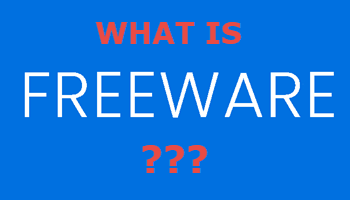A recent comment from a reader in response to an article listing a number of my freeware recommendations brought to light the fact that many users today are not aware of exactly what constitutes “freeware”. So, I decided to clarify.
Many years ago, perhaps a decade or more, freeware was abundant and produced in the true spirit of freeware. However, as developers found more and more ways to monetize their efforts, true freeware numbers have decreased. That said, there is still plenty of true freeware around. So, let’s take a look at the criteria that constitute true freeware:
- Obviously, it must be free of charge
- It must be clean and safe
- It must be free from any bundling
- It must not be limited in any way
- It must not include ads of any kind
Now let’s take a look at some of the instances where software is free but not “freeware”:
Freemium: A Freemium model describes software that is available in both Free and Premium versions. CCleaner is a typical example of a Freemium model. Free versions in a Freemium model are typically limited in some way, usually missing features that are only available in the Premium versions. These Free versions are not true freeware and should not be described as “freeware”. In many cases, this type of free software is known as “nagware” because it will typically “nag” users to upgrade to the Premium version.
Donationware: Donationware is when developers ask for a donation, typically a smallish amount of money, to use their free software.
Adware or Ad-Supported: Adware is free software that displays ads or advertising material.
Bundleware: Bundleware is when additional and often unrelated software comes bundled with the free software installer.
Shareware: Shareware is the most misused term, often used to describe Premium (paid for) software. In reality, “Shareware” is software that is available for free, typically for evaluation purposes, and will usually be time-limited demanding a fee for continued use. “Trial” versions of Premium software can be described as “shareware”.
Free and Open Source
I mentioned earlier that there is still plenty of true freeware around and one of the most prolific resources is free and open-source software.
Open Source means that the software’s source code is in the public domain free for anyone to inspect and verify. For this reason, “open source” freeware is regarded as among the safest. However, this freedom of availability of the source code can be a two-edged sword. There have been instances of criminal elements adding malicious code into open-source software and then distributing same, under its original name, through disreputable download sources. That’s why I always recommend downloading software directly from the developer’s website wherever possible and from a reputable download site when not.
Recommended Freeware
Again, this section has been prompted by a reader who submitted a comment in response to an article listing a number of my freeware recommendations. This reader commented that his antivirus blocked the download of certain software. I responded that it was definitely a false positive. I thoroughly check every freeware that is recommended by me and I can assure you all that if freeware is recommended by me, it is guaranteed 100% clean and safe.
Antivirus software can be overly aggressive, which is not necessarily a bad thing, and therefore prone to throwing up false positives. If in any doubt at all, you can always use the excellent Virus Total site to double-check the software. Virus Total scans an uploaded executable (setup file) through multiple antivirus engines including all leading antivirus solutions. I always scan all my recommended software through Virus Total.
So there you have it. I hope this helps clarify exactly what constitutes freeware and what does not.
—



Thanks